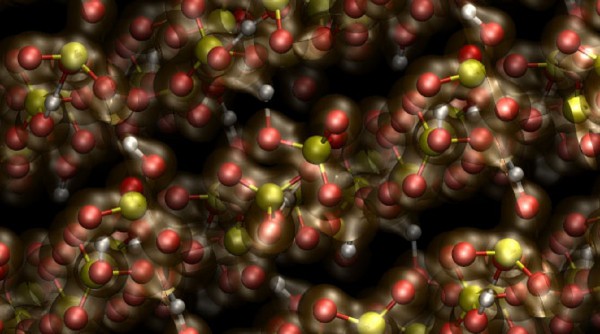World’s largest electronic-structure conference, drawing more than 1,200 researchers, kicks off at EPFL
By Carey Sargent, EPFL, NCCR MARVEL
The Psi-k conference - held every five years - gathers researchers who develop the fundamental theory, algorithms, and computer codes that help us understand, predict, and design the properties and functions of the materials of the future. This year, it has attracted 1,260 scientists to EPFL, its largest attendance ever, despite a major drop in US and Chinese participants.
Participants are based in institutions in 50 different countries and represent 82 nationalities. The conference fully funded the participation for 13 women PhD and junior postdocs and 7 researchers from Africa, thanks to more than 35,000 CHF in fellowships. It will also offer free childcare on site.
Psi-k 2022 will run until Thursday August 25, and it includes 38 symposia in 7 parallel sessions with 115 invited talks and 250 contributed talks, capped by 6 plenary talks, on topics ranging from materials discovery by artificial intelligence, to emerging and future computing, to materials for energy. The full program can be found on the conference website.

Computational materials science is driven by the powerful synergy of theoretical and algorithmic advances and of computational resources that have doubled every 16 months for the past 30 years – this is an unmatched development model in science that grows stronger every year. It has now reached the stage where properties and performance of novel materials can be predicted or designed before attempting experimental realization, accelerating the discovery of much needed breakthroughs in key societal areas including energy and the environment; high-tech, high-values industry and information-and-communication technologies.
The Psi-k network, established in 1994, builds strength and cooperation in the field of computational electronic structure through activities coordinated by the Charity’s Board of Trustees, a Scientific Advisory Committee, and 16 Working Groups. Some 30 workshops, conferences, schools or tutorials take place every year – many together with CECAM, headquartered here at EPFL, including a joint annual research conference, as well as this major conference covering the entire field every 5 years.
The Psi-k mission statement highlights its goals of developing the fundamental theories, algorithms, and computer codes needed to understand, predict, and design materials properties and functions, with theoretical condensed matter physics, quantum chemistry, thermodynamics, and statistical mechanics forming its scientific core.
Applications encompass inorganic, organic and bio-materials, and cover a whole range of diverse scientific, engineering, and industrial endeavors that will be showcased throughout the week. Speakers come from both traditional academic and research environments and cover various topics. Artificial intelligence and quantum computing take the spotlight, but topics as diverse as mountain climate at kilometer resolution or electronic-structure calculations and the nature of the Universe will also be discusses, as will some unexpected endeavors: the ultimate electronic-structure functional at DeepMind (thank you AlphaGo!), financial engineering at BlackRock, specialty glasses at Schott.
Some of the sponsors of this year’s conference include the NCCR MARVEL, CECAM, EPFL, MaX, IBM Research Europe, Microsoft, nVidia, and the Paul Scherrer Institute. One last thing—anyone planning an outing to MAD this coming Wednesday should rather postpone it: all five floors will see Psi-k scientists rocking out at 128 BPM.
Low-volume newsletters, targeted to the scientific and industrial communities.
Subscribe to our newsletter